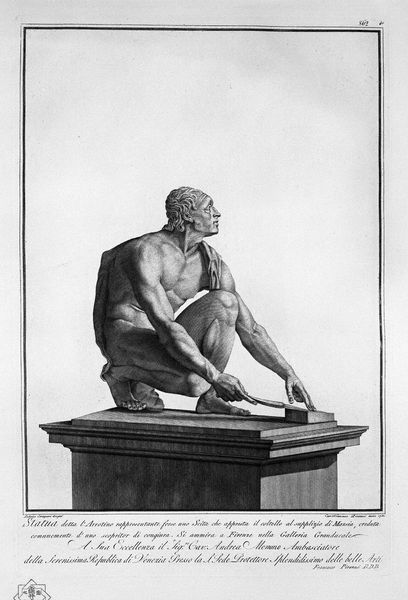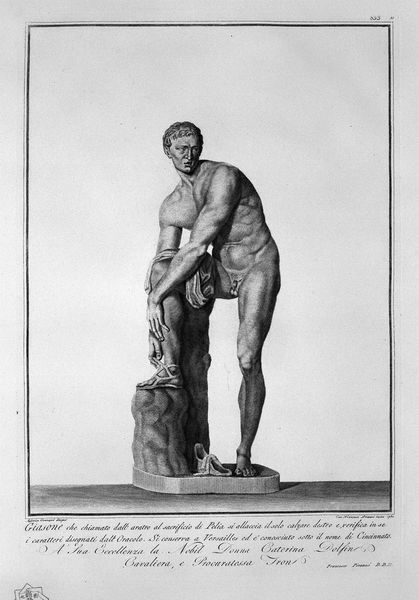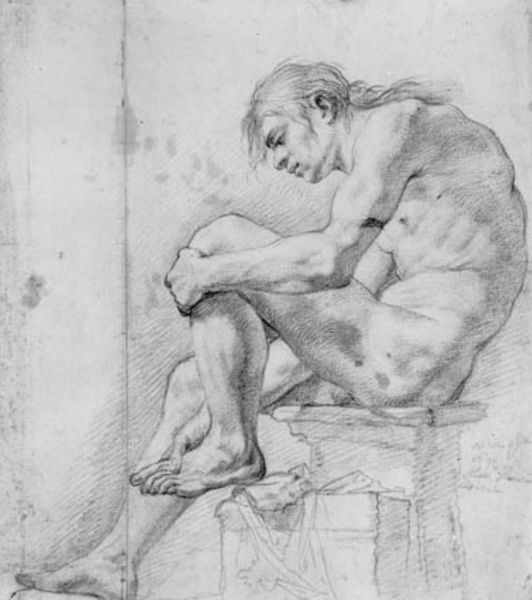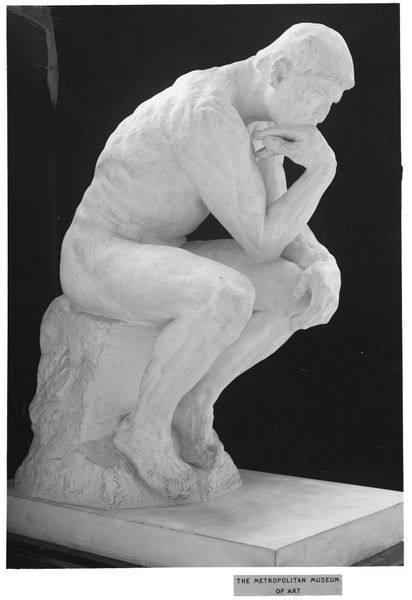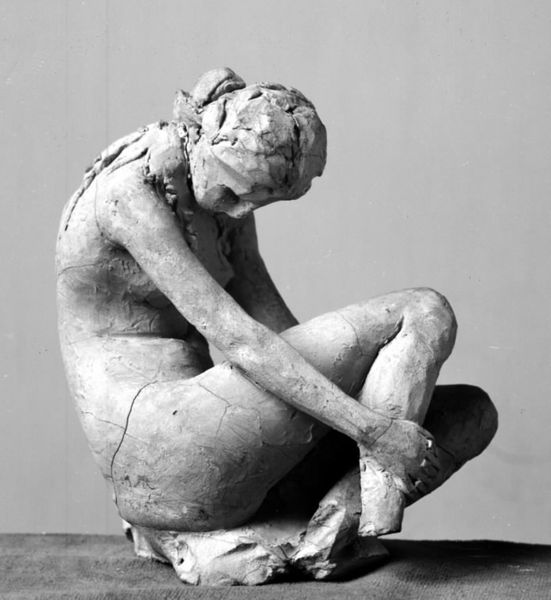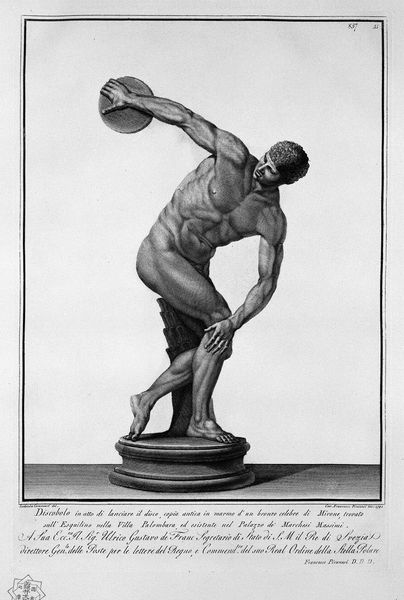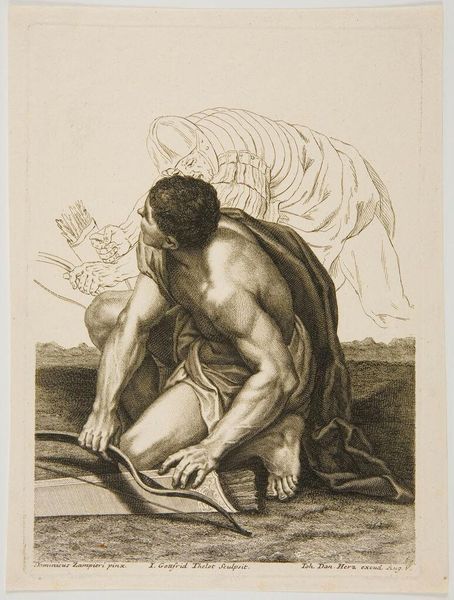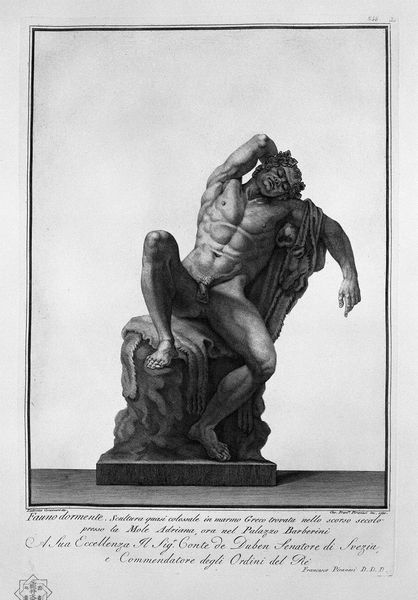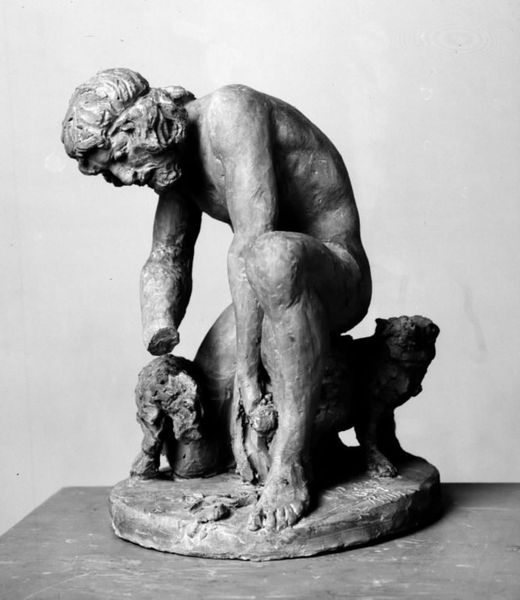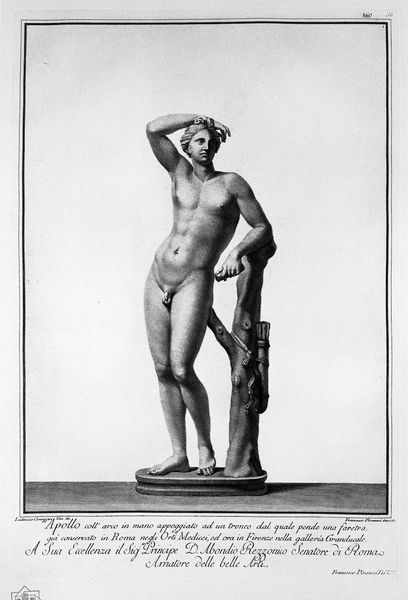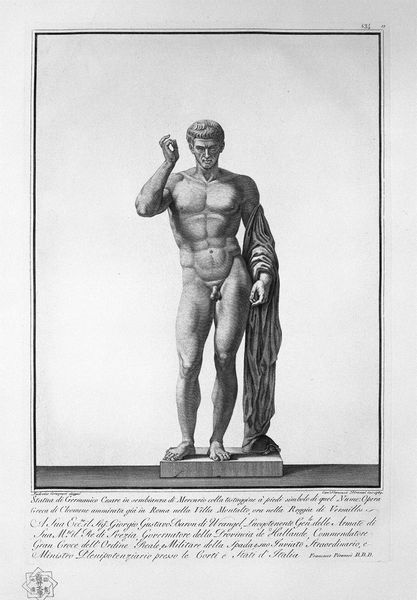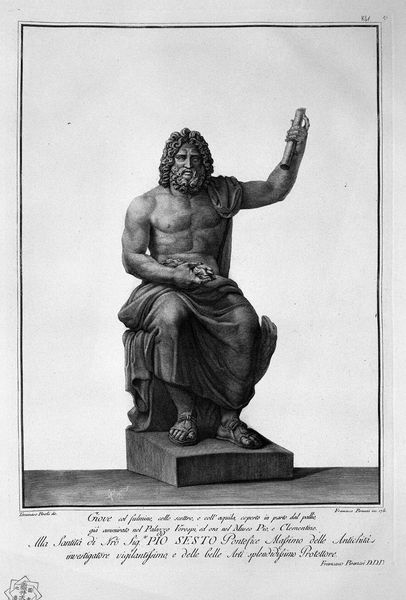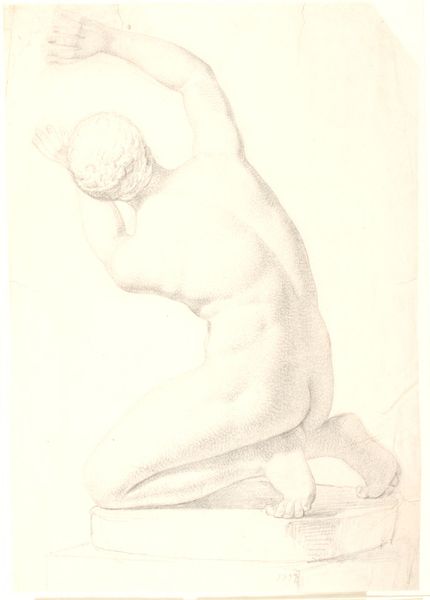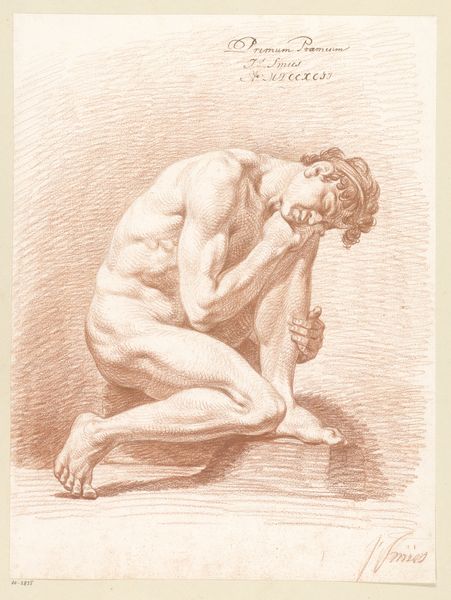
print, metal, engraving
#
neoclacissism
# print
#
metal
#
greek-and-roman-art
#
landscape
#
figuration
#
men
#
history-painting
#
academic-art
#
engraving
Copyright: Public domain
Curator: Welcome. Today, we're examining "Spinario," an engraving by Giovanni Battista Piranesi. It presents a classical statue, a young boy seated and extracting a thorn from his foot. Editor: My first impression is one of surprising intimacy. The starkness of the black and white engraving emphasizes the subject's quiet, personal struggle. There's a somber mood, an interruption of the heroic, perhaps? Curator: Indeed. Piranesi, best known for his etchings of grandiose Roman architecture, here focuses on a more intimate subject. We can discuss his choice to focus on metal and the labor-intensive process of engraving as itself reflective of craft. Editor: I find the selection of Spinario fascinating precisely because it departs from grand spectacle. The thorn, that small intrusion, speaks volumes about vulnerability and the interruption of ideal forms. Its meaning expands beyond pain and injury; does the thorn stand for a corruption of sorts? A marring of the classical perfection sought during this period? Curator: That is an interesting perspective! This work offers commentary on value and purpose. Engravings, like other forms of printed matter, facilitate circulation, so his selection of this classical statue elevates it within the social fabric. Piranesi essentially reproduced classical ideals in a more accessible medium. Editor: Yet the pose of the figure recalls more profound imagery beyond just classical sculpture. Think of images of suffering--even the crucifixion--scaled down to a moment of personal physical strife. A subtle recasting, perhaps, in which even the smallest pain carries significance. I can also view this figure as the burdened Atlas. Curator: By focusing our attention on how it became an easily accessible print available on a mass scale for trade and cultural dissemination, we are able to consider the ways social boundaries were transgressed during this historical period, as high and low art became a means for dialogue and new interpretations. Editor: Piranesi invites us to meditate on classical ideals by focusing on the small, human-scale experience within this one carefully chosen statue, it creates an immediate link between grand archetypes and individual human feelings, doesn't it? It bridges the gap between symbol and everyday existence. Curator: Exactly! The engraving speaks volumes about Piranesi's capacity to highlight that shift and his astute awareness of how classical sculpture, and art itself, are material and social products of a moment in history. Editor: A very telling artwork then.
Comments
No comments
Be the first to comment and join the conversation on the ultimate creative platform.
